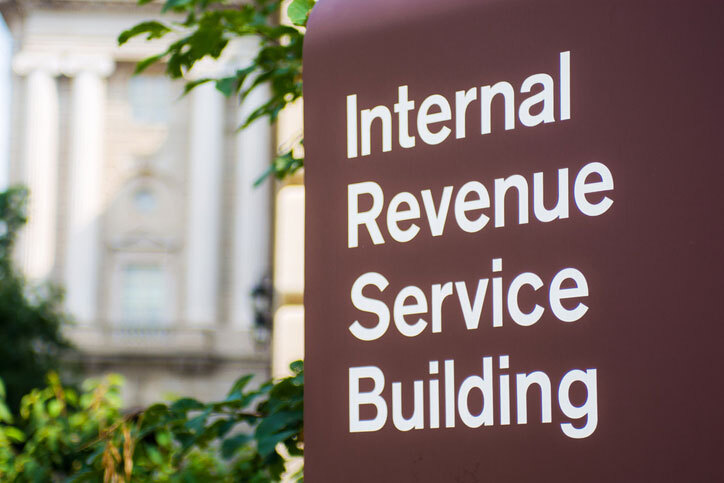How to File Taxes When You’re Self-Employed
Today’s generation is seeing a spike in small businesses and freelancing. The traditional definition of a job has been thrown out of the window and modern jobs operate much differently today than decades ago. More and more people are turning to freelance and contract work to make ends meet, but are not aware of the responsibilities and differences that comes with filing taxes as self-employed.
Self-employed taxpayers are a much broader scope than start-up businesses and employers that work on-site away from home. If you have signed a contract to complete tasks for someone in exchange for payment, then you are a freelancer or contract worker. This means that you too are self-employed and should file your taxes accordingly to avoid any trouble.
As a Self-Employed taxpayer, what are your obligations?
Freelancers and business owners file taxes differently from other taxpayers earning wages. For instance, as a freelancer you are legally obligated to file annual returns and pay estimated taxes quarterly. There is a specific tax referred to as SE (self-employed) tax that must be paid in addition to your income tax. This tax will cover Medicare and Social Security; things that are normally withheld from regular wages.
The IRS website has estimated tax forms (form 1040-ES) to assist you in your efforts to pay your quarterly dues.
If you are filing as self-employed for the first time and you haven’t made any money from your business yet, you will be asked to give an estimation of how much you expect to earn for the upcoming year.
Self-Employed Tax & How it Affects You
The first step in realizing your obligations, or lack thereof, with SE tax is to calculate your net profit or net loss from your business.
Calculating Net Profit and Net Loss
Determining your SE tax starts with subtracting your business expenses from your income. If you find that you’re spending less than you’re making, the difference is your net profit. If you find that you are spending more than you make, this difference is calculated as net loss.
If your net earnings from self-employment exceed $400 then you should file income tax. However, if your earnings were less than $400, you may still meet other filing requirements. You can find a list of those requirements here.
How to File
SE tax filers are responsible for reporting the above information (profit and loss) via Schedule C. This is for tax filers that operated a business or practice as a sole proprietor. There are also instructions for Schedule C on the IRS website.
Freelancers are also responsible for reporting the Medicare and Social Security tax withheld from their income. You can do this by using Form 1040 or 1040-SR. Use the income or loss calculated on Schedule C to calculate the amount of SS and Medicare taxes you should have paid during the year.
In most cases you may also be required to file an information return to the IRS if you made or received a payment as a small business or freelancer.
Qualifying for Deductions
Not everything is about what you owe, even though filing can be an anxious time for a lot of first-time freelancers. As an SE taxpayer, you are eligible for certain deductions that other wage earners may not be. If you work from home, as many freelancers do, and have expenses toward your home office, or even supplies that are required for you to perform your work, those expenses may qualify as deductibles.
Married While Freelancing
If you happen to be married and working with your spouse, filing taxes can be a little different. Because of the Small Business and Work Opportunity Tax Act of 2007, spouses are generally permitted to jointly file without being considered a partnership. This is done for Federal tax purposes. As a qualified joint venture, both you and your spouse should elect to have this provision apply while filing. This means that you both own and operate the business, but will not be legally held as a partnership or LLC (limited liability company).
Each spouse must calculate total net gain, loss, deductions and credit, and all must be accounted for when filing Schedule C and all other forms. While respective shares of the business must be reported, this generally does not increase the total tax on the return. It does, however, give each spouse credit for social security earnings; which will go toward retirement benefits.
Where to Learn More
If you find yourself in need of more information about filing as a self-employed taxpayer, the IRS has plenty of educational resources.
If you find yourself owing money to the IRS and accruing interest debt, you should look into whether you qualify for the Fresh Start Initiative Program. There are options for dissolving your debt without going bankrupt, and you may even qualify for reductions.
Any new or systemic Liens and/or Levies will also be suspended for the time being.
For taxpayers who are considered “seriously delinquent”, the IRS will suspend any new certifications for the remaining period. Any taxpayer who falls into this category in reminded and encouraged to enter into an Installment Agreement or apply for an Offer In Compromise.
The IRS will not forward any new delinquent accounts to private collection agencies at this time.
Taxpayers have until July 15, 2020 to verify to the IRS they are qualify for the Earned Income Tax Credit or to confirm their income. If the taxpayer is unable to verify their credentials or provide appropriate documents for this credit, they are encouraged to notify the IRS before the deadline. No cases will be denied this credit for failure to provide requested information until July 15.
Case workers will continue business as usual. However, most case work will be conducted remotely (video/over the phone conferences). Any requests for documentation sent by the Office of Appeals should be responded to in a timely manner to ensure a smooth process.
The IRS will continue to take the appropriate measures to stay compliant and protect the applicable statutes of limitations. In situations where certain statutes may be compromised, taxpayers are encouraged to extend such statutes. Otherwise, Notices of Deficiency will be issued by the IRS and similar actions will be pursued to protect the interests of the government in preserving such statutes. Where a statutory period is not set to expire during 2020, the IRS is unlikely to pursue the foregoing actions until at least July 15, 2020.
Practitioners are reminded that PPS wait times may be significantly longer, depending on staffing levels and allocations going forward. The IRS will continue to monitor this as situations develop.
“The IRS will continue to review and, where appropriate, modify or expand the People First Initiative as we continue reviewing our programs and receive feedback from others,” Rettig said. “We are committed to helping people get through this period, and our employees will remain focused on these and other helpful efforts in the days and weeks ahead. I ask for your personal support, your understanding – and your patience – as we navigate our way forward together. Stay safe and take care of your families, friends and others.”
Learn how easy it is to qualify for tax savings.




